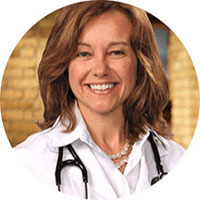Get Easy Health Digest™ in your inbox and don’t miss a thing when you subscribe today. Plus, get the free bonus report, Mother Nature’s Tips, Tricks and Remedies for Cholesterol, Blood Pressure & Blood Sugar as my way of saying welcome to the community!
Have drugs and therapies helped make heart disease the #1 killer?

It wasn’t long ago that The Center for Disease Control (CDC) released its health statistic brief…
And, yet again, heart disease was at the top — as the leading cause of death in the United States.
It’s been like this for years, and years and years.
Not surprising, right… but, you know what was?
Life expectancy fell — from 78.7 years in 2016 to 78.6 years for 2017. Part of that is due, tragically, to increases in the rate of suicide deaths.
But another reason is the lack of change in deaths due to heart disease.
There was no improvement, despite the hundreds of BILLIONS of dollars we spend trying to treat it.
So where are we going wrong?
Big bucks on medicine and we’re still missing the point
We can spend all the money (emphasis on ALL) on research and development… on medications and procedures.
But no amount of lasers, pacemakers, stents, and drugs can make up for the primary underlying driver of heart disease.
And that’s diet.
As someone who takes care of patients with heart disease and those at risk for heart disease, I’ve come to understand how hard it has become to eat right.
Conflicting messages, fad diets, meaningless health claims on products, counterproductive agriculture subsidies, non-nutritive ingredients, addictive food formulations, dietary guidelines tainted by industry influence.
The list goes on and on.
In some sense, it’s a miracle heart disease death rates have not gone up! A testament to the steady drumbeat of continued medical advancements.
But shouldn’t we be spending all our energies on prevention rather than costly treatment and drugs that are only maintaining the status quo?
Thinking beyond cholesterol
When physicians work with patients to lower cholesterol, it’s not really the cholesterol that’s the main target.
Rather, it’s the RISK of experiencing a heart event that we are trying to reduce. Lowering cholesterol is the means to that end… not the end in and of itself.
And this is why food is such a powerful intervention!
Statins affect only cholesterol. But food impacts risk on multiple levels — and even affords your health benefits when cholesterol doesn’t change much.
Related: How to set your doctor straight on statins before it’s too late
Take fiber, for instance… this one nutrient can be the difference between life and death, not only for heart disease but for cancer and diabetes, too.
Slay the disease risk, slay the disease
Present in whole grains, fruits, vegetables, beans, legumes, nuts and seeds, fiber is a powerful determinant of risk.
A recent study that evaluated 135 million person-years of data from 185 prospective studies and 58 clinical trials found that people who ate a fiber-rich diet experienced a 15–30% decrease in the chance of dying from heart disease or any disease, or of developing stroke, type-2 diabetes or colorectal cancer.
These numbers rival what statins can achieve for heart disease — and blow them out of the water for diabetes and cancer.
At this point, you’re probably thinking you need to consume massive amounts of fiber to attain these health benefits. You’d be wrong.
It only takes 25-29 grams per day! More is better, but even at these low amounts, fiber has a giant impact on health.
But here’s an important point: Not all fiber is created equal. The best results were attained when the fiber came as part of a whole food/complex carbohydrate package.
In other words, taking a slug of Metamucil in the morning will not yield the same risk reduction. Because it’s not only the nutrient but the delivery vehicle that matters.
But here’s the depressing thing: How much fiber does the average American consume? About 15 grams. Only 10 more grams and all those health benefits could be yours!
The 10-gram fiber requirement was not chosen by accident when we formulated Step One Foods. It was deliberate because the data told us that this would be the amount that could impact risk.
So, whatever you do, even if you take medicine, increase your fiber and stick to it.
Other ways you can get 10 grams of whole food fiber? 2-3 apples, 3 cups of carrots, 4 cups of broccoli, 1 cup cooked kidney beans, 10 cups of popped popcorn or 1 ounce of chia seeds.
Maybe, just maybe, if enough of us can focus on real food — not too much and mostly plants — we can knock heart disease down from its number one spot by next year.













